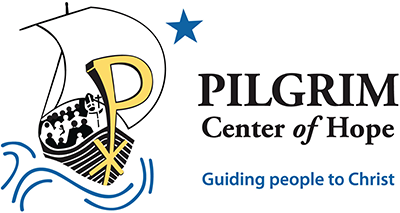On their second visit to the Holy Land, Deacon Tom and Mary Jane Fox experience both the suffering and extraordinary wonder of life in the Holy Land.
1986 – Second Visit to the Holy Land, Part 1.
Mary Jane: Our love for the people of the Holy Land grows even deeper during our second visit; especially once we become aware of their suffering. One morning, Tom and I are planning a visit to Bethlehem, which is about six miles from Jerusalem. We travel by taxi with a man named Joe. When he finds out where we are going, he tells us his family is from Bethlehem and offers to serve as our tour guide. He points to some land along the route telling us his family once lived on it.
“Did your family own the land?” I ask.
“Yes, we still own it, but my family has not been allowed to live on it for decades.”
Tom and I look at each other puzzled, “What do you mean, not allowed?” I ask.
Joe explains, “When Israel became a State, they were given many acres of land to settle on. This land was not unoccupied. People lived there. Much of it was already owned by families, like my own, who had been living on this land for many generations. People from the government came and told the families they had to move. I was not born yet, but my family still speaks of the trucks and men with guns that came one day and pushed all the families out of their homes and off their land. New families were moved into our homes. Our families were never allowed to return and have never been paid for our land. We still own it, but we cannot live there.”
Deacon Tom: We have no idea how to respond. Could this be true? What was so amazing to us was how matter-of-factly Joe tells us this story. There is a deep sadness in his voice, but no hint of bitterness or anger.
That evening, we ask Sr. Bernarda if what Joe said really happened. “Sadly, it is very true,” she answers. Sr. Bernarda sits down across from us, closes her eyes and slowly shakes her head. “There is much suffering still in this land of our Lord.”
Sr. Bernarda tells us that many of the Palestinian people, both Christian and Muslim, were forced off their land when Israel became a state and it continues to this very day. She said that many of the Jewish people see this tragedy and work to help restore land to its rightful owners. “But just as in the time of Jesus,” she says, “might often rules over right.”
Mary Jane: We retire for the night, our heads spinning trying to make sense of what we just heard. The time we had spent at Eim Karem helped. Much of it was spent meditating on Mary and Elizabeth and wondering how they dealt with the contradiction of who they were in light of God’s revelation. Mary, a virgin, is to be a mother. Elizabeth, way past child-bearing years, is with child. Their heads must have been spinning too. How they dealt with the contradiction, we decide to imitate.
Deacon Tom: Before going to sleep, Mary Jane and I pray together; praising God and remembering His promise, just as Mary did in her Magnificat. We pray for God’s grace to understand what Joe and Sr. Bernarda revealed to us. We ask Mary and Elizabeth to intercede for us and to pray with us for the grace to accept and follow what God wanted of us in light of this knowledge. We went to sleep better understanding what it means to ponder as Mary did. We saw her wisdom in taking what we know is true in God and placing it over our desire for children and the reality of what we learned from Joe.
Mary Jane: Our days take on the familiar routine from our first visit. We wake early each morning for Mass at the Church of the Holy Sepulchre, return to Casa Nova for breakfast, visit the holy sites during the day, eat at area restaurants for lunch where we meet and befriend the local people (and hear many similar stories as Joe’s), rest and pray in the afternoon, and dine in the Casa Nova dining room.
Deacon Tom: The dining room at Casa Nova is one of our favorite places. The walls are decorated with paintings of St. Francis and other religious sacred art. It is beautiful, but simple. We are seated at long tables and meals are served in large bowls and plates that are placed in the middle for all to share. Wine and water are offered, and in short time, introductions to strangers flow into long conversations ending in friendships. With people you did not even know a few hours before, you find yourself conversing about God, faith, family, hopes and dreams. Pilgrimages are journeys of the body, in the daily walking to the holy sites, of the mind, in the growing knowledge of God, and of the soul in sharing with others.
Mary Jane: One evening at dinner, we meet Father George McKenna, a priest from Chicago. He has traveled to the Holy Land on his own for many years. He seems surprised to find that we are also traveling on our own and not part of an organized group. For the remainder of our visit, we often travel together to the holy sites. In our many conversations with Father George, he helps us to discern our growing love for the Holy Land and desire to do more for God. Through these discussions, Tom and I realize we are both searching for more meaning to our lives back home. What that would be, we had no idea.
Deacon Tom: We have similar conversations with Sr. Bernarda. True to form as our spiritual mother, Sr. Bernarda says she knows exactly what we need to do. She offers to introduce us to her spiritual director, a Franciscan priest named Father Giorgio Columbini, O.F.M. She describes him as a humble, holy priest who loves the life of prayer and spends many, many hours in Adoration and offering spiritual direction, especially to the Franciscan sisters and the local Catholics.
Mary Jane: She takes us for a long walk to meet him. We leave Casa Nova in the old city of Jerusalem and journey through the Kidron Valley to the foot of the Mount of Olives where the Garden of Gethsemane is located. She explains as we walk that Father Giorgio has built some small hermitages for people to pray in solitude.
Deacon Tom: Mary Jane and I have visited the Garden of Gethsemane a number of times and often celebrated Mass at the Basilica of the Agony built over where Jesus spent His hour in agony. We marvel at the olive trees growing throughout the area which we learned some are over 2000 years old and called the silent witnesses of the Passion of Christ. We don’t remember seeing any hermitages though and I mention that to Sr. Bernarda. She looks at me, smiles and says, “Follow me.”
Mary Jane: Tom and I follow Sr. Bernarda to the side of the church where we see a gate. Sr. Bernarda rings the bell and soon it is opened by Fr. Giorgio. She introduces us and we enter a gated garden. Fr. Giorgio welcomes us and takes us on a tour of this amazingly quiet sanctuary in the middle of noisy Jerusalem. We are astounded yet again at the ways people are called to serve God and minister to His people. We see St. Augustine’s words come to life, “O Thou Beauty of ancient days, yet ever new,” as we stand in awe of how this one man has built a place so our Lord can ask His followers today as He asked the Apostles over 2000 years ago, “Remain here and keep watch with me,” (Mat 26:38).
Deacon Tom: Father Giorgio invites us into his office for coffee. He also lives in this little place that includes a small cell for sleeping, a prayer room and an area where he makes his coffee and meals. We visit for a while and enjoy listening to this holy priest and Sr. Bernarda conversing, sharing joy, laughter and stories. Father Giorgio speaks very little English so Sr. Bernarda has to translate for us.
Mary Jane: Towards the end of the visit, Sr. Bernarda is speaking to Father Giorgio in their native Italian. Through my Spanish I can understand a little and tell Tom that she is telling him about us. She explains we are a young couple from America traveling on our own and desiring to know God better and His will for our lives. Father Giorgio listens, nods his head and then says to us, “You must stay here in the Garden of Gethsemane and experience the silent prayer and solitude of being here where Jesus himself prayed.”
Deacon Tom: Mary Jane and I look at each other marveling that yet another incredible spiritual opportunity is being offered to us.
Next month, the Foxes will share their experience of spending two nights in the Garden of Gethsemane.

Deep suffering has struck people of many nations over the history of the world. Pope Leo XIV encourages how the poor and marginalized are often people of the greatest hope.
“The poor can be witnesses to a strong and steadfast hope, precisely because they embody it in the midst of uncertainty, poverty, instability and marginalization. They cannot rely on the security of power and possessions; on the contrary, they are at their mercy and often victims of them. Their hope must necessarily be sought elsewhere. By recognizing that God is our first and only hope, we too pass from fleeting hopes to a lasting hope.”
Once we desire that God accompany us on the journey of life, material wealth becomes relativized, for we discover the real treasure that we need. The words that the Lord Jesus spoke to his disciples remain forceful and clear: “Do not store up for yourselves treasures on earth, where moth and rust consume and where thieves break in and steal; but store up for yourselves treasures in heaven, where neither moth nor rust consume and where thieves do not break in and steal” (Mt 6:19-20).

